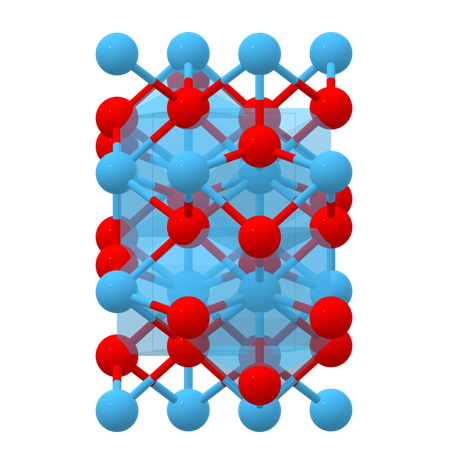Crystal Structure and Optical Absorption Analysis of Aluminum Carbide
As a kind of ionic (or salt-like) carbide, aluminum carbide(Al4C3) hardly any active functions have been found except for structure material purposes. However, considering the unique characteristic features of its crystal structure, Al4C3 might have huge potential for exhibiting active functionality on field-emission application. This article will introduce the crystal structure and further research of aluminum carbide.

The figure above[1] shows the side view of the model of the Al4C3(0 0 0 1) slab and the top views of the different adsorption sites: (a) and (c) the Alterminated surface; (b) and (d) the C-terminated surface. (Black and red spheres represent C and Al atoms, respectively. And three kinds of atoms with different sizes represent the top three layers, sequentially.)
Aluminum carbide single crystals are synthesized by the reaction between SiC and aluminum and are structurally verified and analyzed by Raman and X-ray diffraction spectra. The optical absorption measurements of the Al4C3 crystals indicated that the bandgap is about 2.3 eV, which surprisingly is much higher than the bandgap value from the literature. In order to elucidate the discrepancy between the new experimental results and the literature, an advanced ab initio based investigation on the structural, electronic and vibrational properties of the aluminum carbide is performed. Remarkably, the scGW approach arrived at an indirect band gap Γ →L equal to 2.12 eV while the HSE06 calculated band gap was found even closer to the experimental value equal to 2.27 eV. In addition, the hole effective mass is found to be considerably high due to the flat nature of the valence band at the Γ, indicating low hole mobility. Moreover, phonon calculations indicated that the vibrations of the Al atoms contribute mostly on low frequency acoustic branches, while vibrations from C atoms have a stronger contribution to optical phonons.
References
[1] Influence of Fe on Al4C3 as a heterogeneous nucleation substrate: a first-principles study. Mater. Res. Express 4 (2017) 106517.
[2] Structural, Electronic and Vibrational Properties of Al4C3. doi:10.1002/pssb.201900037
);

